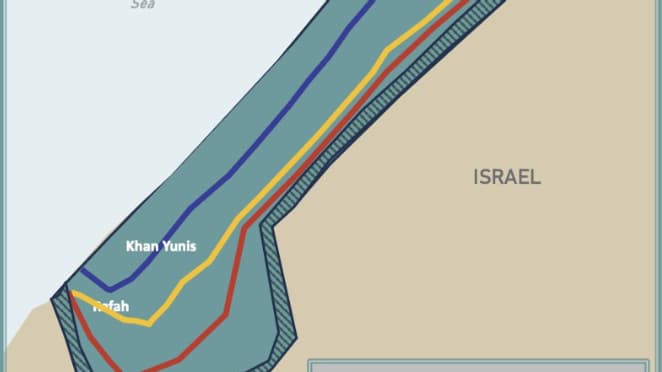Is an end in sight to the terrible experience in Gaza? Israel and Hamas reached an agreement on Thursday, October 9, to end the war in Gaza after strong pressure from US President Donald Trump on the Israeli government and four days of marathon negotiations in Sharm el-Sheikh in Egypt.
Launched in response to the October 7 attack, the Israeli offensive in Gaza left tens of thousands of people dead in the Palestinian enclave and caused a humanitarian disaster described as “genocide” by a UN commission of inquiry.
“Blessed are the peacemakers!” exulted Donald Trump on his Truth Social network, on the eve of the announcement of the Nobel Peace Prize he hopes to win.
Israel and Hamas agreed to a ceasefire and the release of hostages, the first step of the 20-point plan announced by Donald Trump at the end of September and accepted by Benjamin Netanyahu. Otherwise, the future of the Gaza Strip is still largely unwritten and will be the subject of new negotiations.
· Hostages released in exchange for Palestinian prisoners
The first phase of the plan includes a ceasefire and an exchange of Palestinian prisoners for Israeli hostages held by the Islamist movement. Hamas will release the 20 living hostages (of the 47 still in Gaza) in one go, a Hamas official told AFP.
They will be exchanged for nearly 2,000 Palestinian prisoners: 250 serving life sentences and another 1,700 detained by Israel since the start of the war, according to this source.
The agreement provides that the exchange will be carried out within 72 hours after signing. Donald Trump said that all the hostages, dead and alive, “would be back on Monday.”
It should be noted that Palestinian leader Marwan Barghouthi, a Fatah movement figure detained in Israel, is not part of the exchange “at this stage,” according to the Israeli government. Cited as a possible successor to Palestinian President Mahmoud Abbas, Marwan Barghouthi has been imprisoned by Israel since 2002 after being sentenced to life in prison for his role in anti-Israel attacks.
· Humanitarian aid returns to the enclave
At least 400 trucks of humanitarian aid will enter the Gaza Strip each day during the first five days of the ceasefire, and this number will increase in the following days, according to a Hamas source to AFP.
The UN agency for Palestinian refugees, Unrwa, said it had “enough to feed the entire population for the next three months.”
So far, humanitarian aid has arrived slowly to the famine-stricken enclave, under the control of a single organization, the Gaza Humanitarian Foundation, controlled by Israel and Washington.
· Gradual withdrawal of the Israeli army
According to Donald Trump, the agreement reached provides that Israel will “withdraw its troops to the agreed line” within the enclave. The army currently controls more than 80% of Gaza’s territory, forcing its 2.1 million inhabitants to crowd into a small coastal strip.
According to a map released by the White House when announcing the US peace plan, Israel must make a first limited withdrawal after the release of the hostages. Its army will withdraw further as Hamas leaves Gaza and an international force will ensure security in the enclave.
Ultimately, under this plan, Israel will retain control of all of the enclave’s borders, including the one shared between the Palestinian territory and Egypt.
· International Stabilization Force, disarmament of Hamas… A second phase to negotiate
Looking ahead, crucial points remain unresolved and will be the subject of further negotiations. Donald Trump’s peace plan thus provides for the deployment of an International Stabilization Force (ISF) to supervise the “approved Palestinian police forces” and guarantee “long-term internal security.” But the composition of this force has not yet been formalized.
As for Hamas, the Trump plan indicates that members who “commit to peaceful coexistence and lay down their arms will benefit from an amnesty. Hamas members who wish to leave Gaza will benefit from safe passage to host countries.”
However, the Islamist movement has not yet committed to its own disarmament or discussed the future of its fighters, key points of the proposal. The possible host countries are also not known.
· Towards a Palestinian State?
To administer the enclave after the departure of Hamas, the US plan provides for a “technocratic and apolitical Palestinian committee, responsible for the daily management of public services and municipalities for the population of Gaza.”
These Palestinian leaders would be overseen by an “international transitional body” called the “Peace Committee.” This body would be chaired by Donald Trump himself and made up of other international officials such as former British Prime Minister Tony Blair.
According to Washington, the “Peace Committee” will be in charge of the “reconstruction” of Gaza “until the Palestinian Authority has completed its program of” democratic reforms.
Once these reforms are implemented, the Trump administration believes that “the conditions could finally be met to provide a credible path toward self-determination and the creation of a Palestinian state, which we recognize as the aspiration of the Palestinian people.”
This prospect seems impossible in the short term, while Israeli Prime Minister Benjamin Netanyahu has stated that “no Palestinian state will emerge west of the Jordan” and his right-wing and far-right government has approved a major colonization plan in the occupied West Bank.
Source: BFM TV


